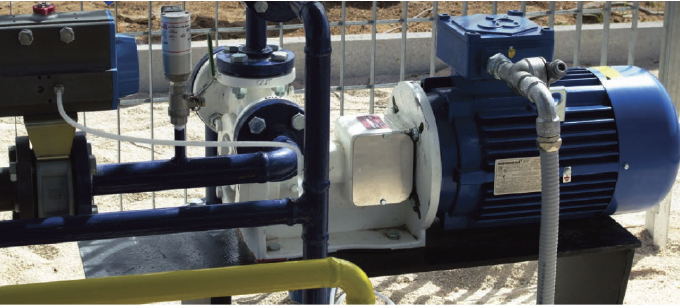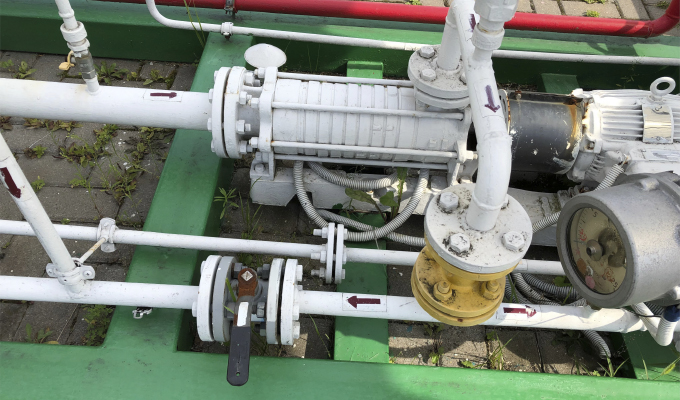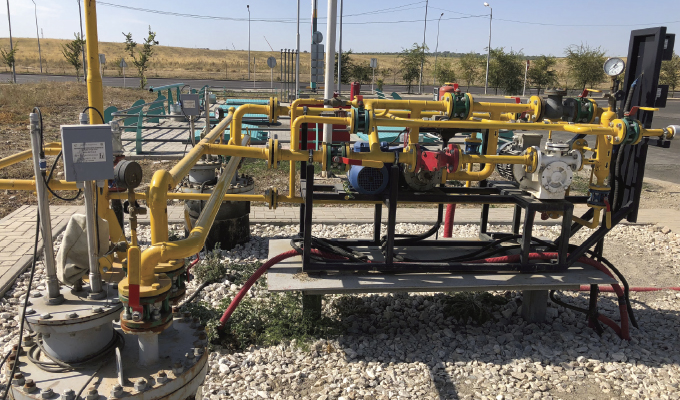Operators often select regenerative turbine and side-channel pumps for difficult liquid transfer or processing jobs. While different in their construction and capabilities, both technologies can be commonly found in applications dealing with liquids near their vaporizing point.
These liquids prove challenging for other process pump technologies because of their near gas-like state, leaving some pumps struggling to reach and maintain prime or generate pressure when pumping these low-viscosity, high vapor pressure substances. These types of challenging substances include Autogas, liquified petroleum gas (LPG), carbon dioxide, ammonia, refrigerants, blowing agents (such as DME), solvents, propane, butane, and other hydrocarbons.
Regenerative turbine and side-channel pumps are designed specifically to move these near-gas liquids from one place to another without difficulty. It is, however, the differences between these two technologies that separate them from being a good process pump for these applications to being an exceptional option.
While operators will still get strong performance out of either solution, regenerative turbine pumps have clear advantages over side-channel pumps in these applications. This article will explore all the facets of these two pump technologies to show why regenerative turbine pumps have a significant edge when processing near-gas liquids.

UP CLOSE WITH REGENERATIVE TURBINE PUMPS
Regenerative turbine pumps are rotodynamic, operating via a rotating, non-contacting, free-wheeling disc with several small cells on its periphery that function as an impeller. About fifty to sixty cells on each side of the impeller capture the liquid as it enters through the suction port. The impeller then accelerates the liquid within the cells around a narrow hydraulic channel. This motion creates the pump’s differential-pressure capability, which enables it to consistently transfer the sometimes near-gas liquid at the required flow rate.
This technology excels at transferring a variety of substances that many other pumps struggle with. Regenerative turbine pumps can effectively process liquids at or near their boiling point, while also handling entrained vapors and liquids at high pressure and low flow. Other pumps run into problems with these fluids because they are not engineered to properly handle the range between liquids and vapors. The consequences of running those fluids through other pump technologies include cavitation, vibration, noise, and unreliable performance, which all reduce the life of the pump and can cause damage to workers and other equipment.
The reason regenerative turbine pumps do not suffer the same fate comes down to their design and construction. The impeller and its cells provide versatility, with the spiral motion and speed smoothing liquids and collapsing vapor bubbles as they form, which prevents cavitation and pulsation. Having a hydraulically balanced design coupled with smooth flow rates also means that the pump can operate without noise or vibration in most situations.
The capabilities of regenerative turbine pumps can be found not only in their design but also in their fluid-handling capabilities. This technology can handle viscosities of 0.1 to 50 cSt with differential pressures up to 20 bar (300 psi) and a maximum allowable working pressure of up to 34 bar (493 psi). Typical flow rates reach up to 52.8 gallons per minute, with some variants (newer iterations especially) hitting flow rates as high as 158.5 gallons per minute.
A LOOK AT SIDE-CHANNEL PUMPS
Like regenerative turbine pumps, side-channel pumps have similar characteristics and processing abilities. How the technology achieves them is the difference, though. Side-channel pumps feature a multistage impeller system and one or two flow paths. The impeller system, which features straight radial vanes, pressurizes low-viscosity fluids, vapors, and near-boiling point substances.
The side-channel design features a small gap between the blades and the casing. It is in this gap that the pump grabs the liquid and sends it to the impeller blades and through the side channel. This motion moves the substances several times between the side channel and the impellers, creating steadily higher pressures for eventual transfer.
Side-channel pumps are known to have the same characteristics as both positive displacement and centrifugal pumps; the narrow clearance between the casing and the blades has a similar function to the close clearance in a positive displacement pump while the impellers are similar to those found in centrifugal pumps.
Operators select side-channel pumps for their versatile nature. The pump’s complex design allows it to generate up to ten times the pressure of a centrifugal pump operating at the same speeds. This makes side-channel pumps ideal in similar applications to those where regenerative turbine pumps excel.
Typical applications for side-channel pumps include refrigerants, fuels, aerosols, butadiene, solvents, hydrocarbons and water, among many similar substances. They also can self-prime, another feature shared between this technology and regenerative turbine pumps.

COMPARING THE TWO TECHNOLOGIES
When pitting the two pumps against each other, it might be difficult to spot their differences when it comes to performance. After all, regenerative turbine and side-channel pumps are exceptional in handling poor suction conditions and both possess the ability to self-prime in the right conditions. They also can handle the same types of fluids without setbacks or performance detriments.
The differences, though, are plentiful. Side-channel pumps require larger frames and space for installation, while the regenerative turbine pump has a more compact footprint. Side-channel pumps can be up to two or more times larger than regenerative turbine pumps and up to three times the weight. Additionally, regenerative turbine pumps also consume less power than side-channel pumps but can still achieve the same flow rates and pressures. They also have a smaller profile and motor, which can also reduce electrical installation costs.
Side-channel pumps are also more complex in their design than regenerative turbine pumps, boasting up to as many as eight impellers in their larger variants, especially those found in LPG applications. Having multiple stages requires larger frames to accommodate them, while regenerative turbine pumps can accomplish similar performance results with single-stage construction in a compact frame.
Like any processing technology, maintenance must occur to keep it functioning as intended. With the complexities of the side-channel pump design, operators have multiple wear parts and functional pieces to account for when performing maintenance. To be precise, side-channel pumps have twenty wear parts, which includes sleeve bushings, a mechanical seal, several impellers, bearings and seal rings among many other components. Keeping track of that many components means maintenance can require multiple hours and more frequent visits given the number of wear parts and the likelihood they all won’t need to be replaced at the same time.
Comparatively, regenerative turbine pumps only have one wear part—the mechanical seal. Operators can spend less time maintaining this type of pump because they only need to track the performance and condition of that single wear part. Even with a major rebuild, the replacement parts would be one mechanical seal, two bearings, one impeller, and four to five O-rings.
Regenerative turbine pump maintenance is also much more seamless and streamlined compared with side-channel pumps. Typical repairs on a regenerative turbine pump can be accomplished in one to two hours without disconnecting the motor or even removing the pump from the pipework. Less downtime for maintenance bodes well for the bottom line for each pump and the entire operation. Additionally, for some regenerative turbine pumps, an operator only needs three manual tools to disassemble it—a wrench, an Allen wrench, and one pair of snap-ring pliers.
Side-channel pumps, meanwhile, require operators to remove them from the pipework system and take them to a workshop for maintenance. Add in the complexities of a side-channel pump’s construction and operators are faced with extended downtime.
CONCLUSION
When selecting a process pump for low-viscosity liquids, liquids near their boiling point, or those applications with poor suction conditions, operators have great options with regenerative turbine and side-channel pumps. Both technologies will get the job done effectively and neither will struggle to pump those substances like other pump technologies do.
However, if operators want to get the most efficient and effective pump technology for these types of applications, then the regenerative turbine pump serves as the best choice. It features a simple, single-impeller design with a compact footprint and low power consumption. Operators can handle all maintenance concerns with minimal tools and without taking the motor or the pump itself offline. Removing the front cover of the pump also provides full access to its interior.
While both pumps function exceptionally well in the field, regenerative turbine pumps hold an edge over side-channel pumps. They can reach the same performance metrics in half the size and complexity, with less downtime for maintenance while also providing power-consumption savings. Operators can get the job done with either pump, but will enjoy more benefits with a regenerative turbine pump, resulting in an optimized pumping system that features difficult-to-handle near-gas liquids or those near their boiling point.
FOR MORE INFORMATION
Stephen Basclain is the business development manager for Ebsray®. PSG® is the global pump, metering, and dispensing-solution expert, enabling safe and efficient transfer of fluids that require optimal performance and reliability where it matters most. PSG is comprised of several leading brands, including Abaque®, All-Flo™, Almatec®, Blackmer®, Ebsray®, em-tec®, Griswold®, Hydro™, Malema®, Mouvex®, Neptune®, PSG® Biotech, Quantex™, Quattroflow®, and Wilden®. For more information, visit www.psgdover.com/ebsray.
MODERN PUMPING TODAY, March 2024
Did you enjoy this article?
Subscribe to the FREE Digital Edition of Modern Pumping Today Magazine!


